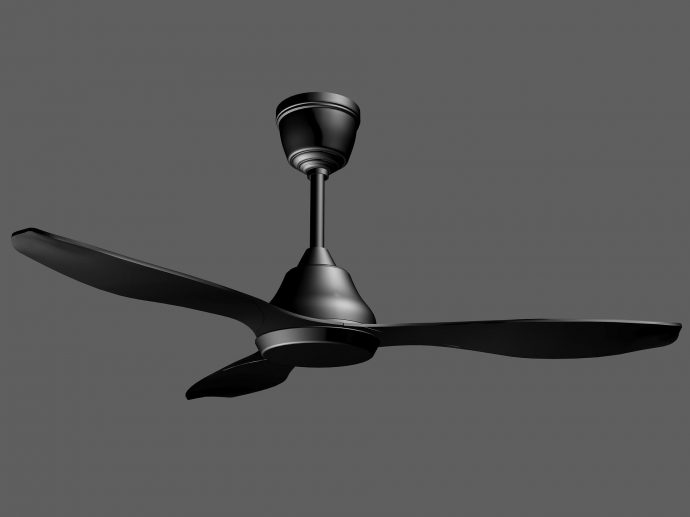Categories more
- Adventures (17)
- Arts / Collectables (15)
- Automotive (37)
- Aviation (11)
- Bath, Body, & Health (77)
- Children (6)
- Cigars / Spirits (32)
- Cuisine (16)
- Design/Architecture (23)
- Electronics (13)
- Entertainment (4)
- Event Planning (5)
- Fashion (45)
- Finance (9)
- Gifts / Misc (6)
- Home Decor (44)
- Jewelry (41)
- Pets (3)
- Philanthropy (1)
- Real Estate (15)
- Services (23)
- Sports / Golf (14)
- Vacation / Travel (60)
- Watches / Pens (14)
- Wines / Vines (24)
- Yachting / Boating (17)
Keep Your Tropical Ceiling Fans Spinning With These Maintenance Tips
Published
06/01/2024Why Regular Maintenance Is Crucial
Do you know how it is when summer rolls around and suddenly your tropical ceiling fans start making weird noises or just stop spinning altogether? Don't worry, it happens to all of us. Ceiling fans take a beating in hot and humid environments, so it's important to give them a little TLC now and then. In this article, we'll go over some simple maintenance tips to keep your tropical ceiling fan spinning smoothly all season long. From cleaning dust buildup to oiling squeaky parts, we've got you covered. With just a bit of easy upkeep, you can keep cool breezes flowing for years to come. Ready to get started? Let's do this!
Top 5 Maintenance Tips
To keep those palm frond blades spinning for years to come, routine maintenance is key. Your tropical ceiling fan works hard, running for hours each day to keep you comfortable, so it's important to show it some love.
Lubricate the Motor
The motor that powers your fan needs to be lubricated regularly. Use a few drops of machine oil or fan lubricating oil and apply it to any oil ports on the motor housing. This prevents friction and overheating, allowing your fan to run smoothly and efficiently.
Tighten the Blades
Over time, the blades can become loose, causing wobbling, clicking sounds, and reduced performance. Tighten the blades by using a screwdriver or wrench to turn the bolts that attach each blade to the blade brackets in a clockwise direction. Be very careful not to overtighten the blades.
Clean the Blades
Dust and grime build up on your fan blades over the months and years of use. Wipe down each blade with a microfiber duster, soft cloth, or fan blade cleaning solution. Pay extra attention to the point where the blades attach to the motor, as dust tends to collect in this area. Clean blades allow for maximum air circulation.
Lubricate the Light Kit (if applicable)
If your tropical ceiling fan has an attached light fixture, the light kit components also require occasional lubrication and tightening to prevent issues. Follow the steps above to lubricate and tighten the light kit, ensuring all wires are properly connected and not damaged before turning your fan back on.
With some simple maintenance, a few times per year will keep your home breezy and comfortable for years to come. It's a small investment of time for such a big payoff.
FAQs on Maintaining Tropical Ceiling Fans
Lubricate the Fan Blades
Over time, dust and grime can build up on the fan blades and cause them to squeak or slow down. Apply a small amount of lubricating oil, like a sewing machine or gun oil, to the top and bottom of each blade. Wipe away any excess oil with a clean cloth and your fan will be whisper-quiet and spinning at full speed again.
Tighten the Screws
ceiling fans are installed with screws that can work themselves loose over the years. Make sure all screws and bolts are securely fastened to prevent wobbling or imbalance. If your fan has blade brackets, check that all screws are tight in those as well.
Balance the Blades
Speaking of imbalance, if your ceiling fan is wobbling noticeably, the blades may need balancing. Most hardware stores sell blade balancing kits with adhesive weights you stick to the blades. Follow the directions to determine where the weights should go and apply until the wobble disappears.
Replace the Capacitor
The capacitor is responsible for starting the fan motor and keeping it running smoothly. If your fan isn't starting properly or is making a humming noise, the capacitor probably needs replacement. This is an easy fix for a handy DIYer. Turn off the power to the fan and discharge the capacitor before removing it. Install a new capacitor with the same microfarad rating and your fan should work as well as new.
Consider an Upgrade
If your ceiling fan is very old or you're just ready for something more efficient and stylish, it may be worth replacing the entire unit. Modern fans are more energy efficient, some equipped with LED lights, and available in a variety of blade spans and styles to suit any decor. With the right maintenance, a new high-quality ceiling fan can provide comfort and style to your space for many years.















